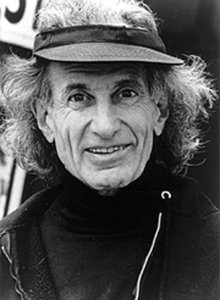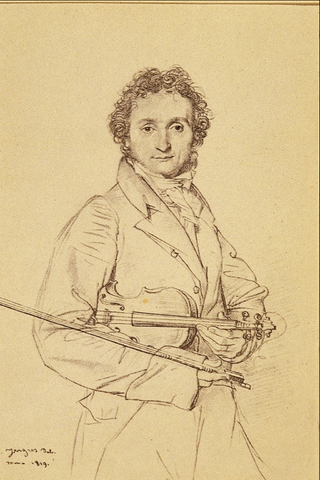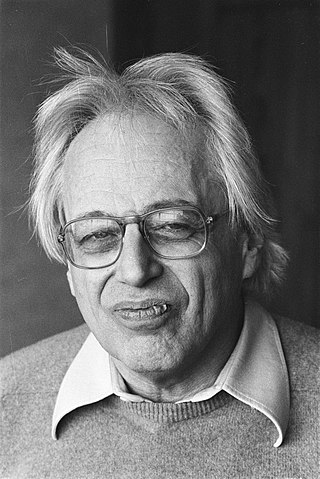Related Research Articles

Orchestration is the study or practice of writing music for an orchestra or of adapting music composed for another medium for an orchestra. Also called "instrumentation", orchestration is the assignment of different instruments to play the different parts of a musical work. For example, a work for solo piano could be adapted and orchestrated so that an orchestra could perform the piece, or a concert band piece could be orchestrated for a symphony orchestra.

Henry Dreyfuss Brant was a Canadian-born American composer. An expert orchestrator with a flair for experimentation, many of Brant's works featured spatialization techniques.
Joan Tower is a Grammy-winning contemporary American composer, concert pianist and conductor. Lauded by The New Yorker as "one of the most successful woman composers of all time", her bold and energetic compositions have been performed in concert halls around the world. After gaining recognition for her first orchestral composition, Sequoia (1981), a tone poem which structurally depicts a giant tree from trunk to needles, she has gone on to compose a variety of instrumental works including Fanfare for the Uncommon Woman, which is something of a response to Aaron Copland's Fanfare for the Common Man, the Island Prelude, five string quartets, and an assortment of other tone poems. Tower was pianist and founding member of the Naumburg Award-winning Da Capo Chamber Players, which commissioned and premiered many of her early works, including her widely performed Petroushskates.

The Violin Concerto in D minor, Op. 47 of Jean Sibelius, originally composed in 1904 and revised in 1905, is the only concerto by Sibelius. It is symphonic in scope and included an extended cadenza for the soloist which takes on the role of the development section in the first movement.
Gordon Percival Septimus Jacob CBE was an English composer and teacher. He was a professor at the Royal College of Music in London from 1924 until his retirement in 1966, and published four books and many articles about music. As a composer he was prolific: the list of his works totals more than 700, mostly compositions of his own, but a substantial minority of orchestrations and arrangements of other composers' works. Those whose music he orchestrated range from William Byrd to Edward Elgar to Noël Coward.
Richard Danielpour is an American composer.

Augusta Read Thomas is an American composer and professor.

The Violin Concerto No. 1, Op. 6, was composed by Niccolò Paganini in Italy and dates from the mid-to-late 1810s. It was premiered in Naples on the 31st of March 1819.

The Concerto for Violin and Orchestra by György Ligeti is a violin concerto written for and dedicated to the violinist Saschko Gawriloff. A performance of the work lasts about 28 minutes.
Margaret Brouwer is an American composer and composition teacher. She founded the Blue Streak Ensemble chamber music group.

Andreas Makris was a Greek-American composer and violinist, born in Kilkis, Greece, on March 7, 1930. He was a Composer-in-Residence for many years at the National Symphony Orchestra in Washington DC, working with conductors such as Howard Mitchell, Mstislav Rostropovich, Antal Dorati, and Leonard Slatkin. He composed around 100 works for orchestra, chamber ensembles, and solo instruments, including the Aegean Festival Overture, which, transcribed for concert band by Major Albert Bader of the USAF Band, became a popular piece with US bands. Grants and awards he received include the Damroch Grant, National Endowment for the Arts Grant, the Martha Baird Rockefeller Award, ASCAP Award, the Fulbright Scholarship, and citations from the Greek Government.
The Violin Concerto is a concerto for violin and orchestra in three movements by the American composer Elliott Carter. The work was jointly commissioned by the San Francisco Symphony and the violinist Ole Bøhn. It was completed February 26, 1990 in Waccabuc, New York, and was premiered May 2, 1990 in San Francisco, with conductor Herbert Blomstedt leading Bøhn and the San Francisco Symphony. The piece won the 1994 Grammy Award for Best Classical Contemporary Composition.
The Seamstress is a concerto for solo violin and orchestra by the British-born composer Anna Clyne. The work was commissioned by the Chicago Symphony Orchestra, for which Clyne was then composer-in-residence. It was first performed May 28, 2015 at Symphony Center, Chicago by the violinist Jennifer Koh and the Chicago Symphony Orchestra under conductor Ludovic Morlot. The Seamstress marks the second collaboration between Clyne and Koh, who had previously premiered Clyne's double violin concerto Prince of Clouds in November 2012.
The Singing Rooms is a concerto for solo violin, choir, and orchestra by the American composer Jennifer Higdon. The work was jointly commissioned by the Philadelphia Orchestra, the Atlanta Symphony Orchestra, and the Minnesota Orchestra. It was first performed on January 17, 2008 in Philadelphia by the violinist Jennifer Koh, The Philadelphia Singers, and the Philadelphia Orchestra under the conductor Christoph Eschenbach. The text of the piece is set to poems by Jeanne Minahan. The piece was most recently done in March 2019 at the Kimmel Center for Performing Arts in Philadelphia by the Temple University Choirs and Orchestra, with a featured violin soloist.
The Violin Concerto is a composition for solo violin and orchestra by the American composer Joan Tower. It was commissioned by the Barlow Endowment for Music Composition and the Snowbird Institute. The piece was first performed by the violinist Elmar Oliveira and the Utah Symphony under the conductor Joseph Silverstein on April 24, 1992, in Salt Lake City, Utah. It is dedicated to the violinist Elmar Oliveira. The composition was a finalist for the 1993 Pulitzer Prize for Music.
Astral Canticle is a double concerto for violin, flute, and orchestra by the American composer Augusta Read Thomas. The work was Thomas's sixth and final commission by the Chicago Symphony Orchestra before she concluded her nine-year tenure there as composer-in-residence. It was first performed in Chicago on June 1, 2006, by the flutist Mathieu Dufour, the violinist Robert Chen, and the Chicago Symphony Orchestra under the conductor Daniel Barenboim. The piece is dedicated to Barenboim and the Chicago Symphony Orchestra. The composition was a finalist for the 2007 Pulitzer Prize for Music.
The Cello Concerto No. 3, Legend of the Phoenix, is a composition for cello solo and orchestra by the American composer Augusta Read Thomas. The work was commissioned by the Boston Symphony Orchestra with contributions from Bill and Solange Brown. It was first performed in Boston on March 14, 2013, by the cellist Lynn Harrell and the Boston Symphony Orchestra under the conductor Christoph Eschenbach. Thomas subsequently adapted the piece into a viola concerto in 2013.
The American Concerto is a trumpet concerto written by the American composer Ellen Taaffe Zwilich. The work was commissioned by the California Center for the Arts, Escondido, the San Diego Symphony, the Virginia Symphony Orchestra, the Buffalo Philharmonic Orchestra, and the trumpeter Doc Severinsen, to whom it is dedicated. The piece was completed in New York on June 12, 1994, and was given its world premiere by Doc Severinsen and the San Diego Symphony under the direction of JoAnn Falletta in Escondido, California, on September 24, 1994.
Missy Mazzoli's Violin Concerto (Procession) was composed in 2021 for the violinist Jennifer Koh on a commission from the National Symphony Orchestra, the Cincinnati Symphony Orchestra, and BBC Radio 3, with support by ARCO Collaborative. Its world premiere was given by Koh and the National Symphony Orchestra conducted by Gemma New at the John F. Kennedy Center for the Performing Arts on February 3, 2022.
References
- 1 2 3 Thomas, Augusta Read (2008). "Violin Concerto No. 3, Juggler in Paradise". G. Schirmer Inc. Retrieved 26 January 2016.
- ↑ Midgette, Anne (9 June 2011). "Music review: 'Juggler in Paradise' at NSO" . The Washington Post . Archived from the original on 15 October 2014. Retrieved 3 October 2021.
- ↑ Smith, Tim (13 June 2011). "Taking the measure of National Symphony Orchestra music director Christoph Eschenbach" . The Baltimore Sun . Archived from the original on 7 September 2020. Retrieved 3 October 2021.
- ↑ Paarlberg, Mike (10 June 2011). "Jennifer Koh Plays Augusta Read Thomas at the Kennedy Center, Reviewed". Washington City Paper . Retrieved 26 January 2016.